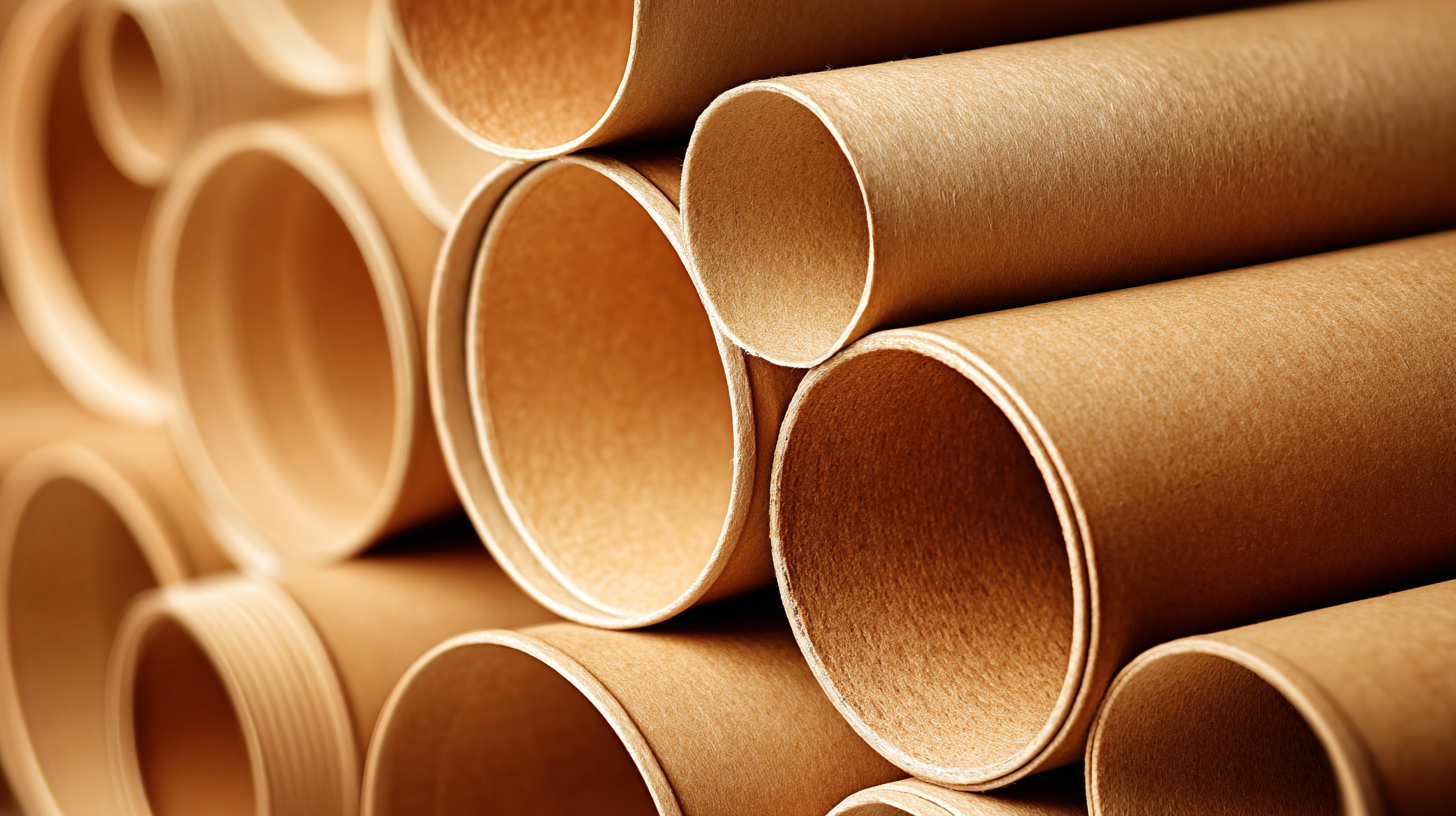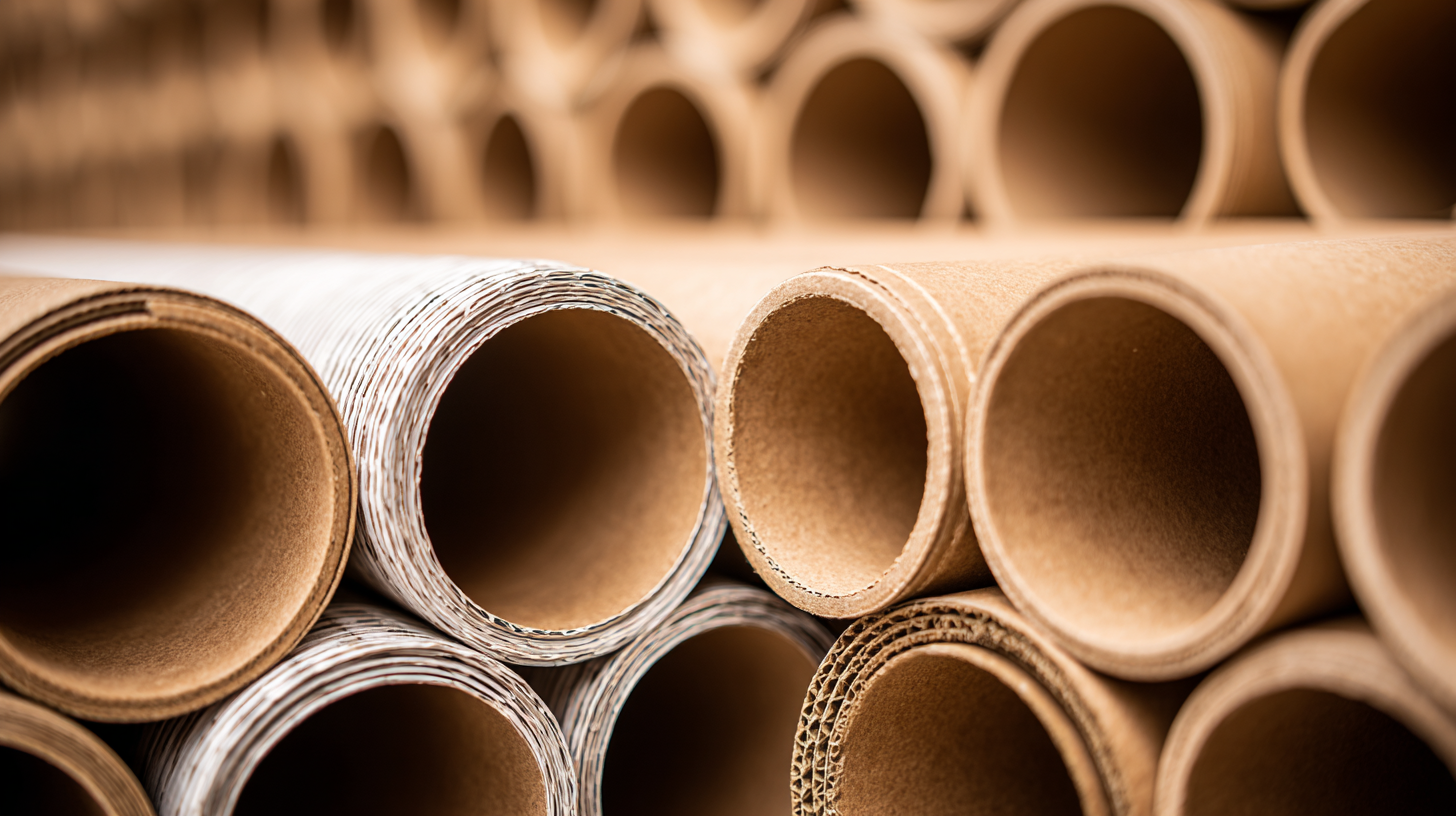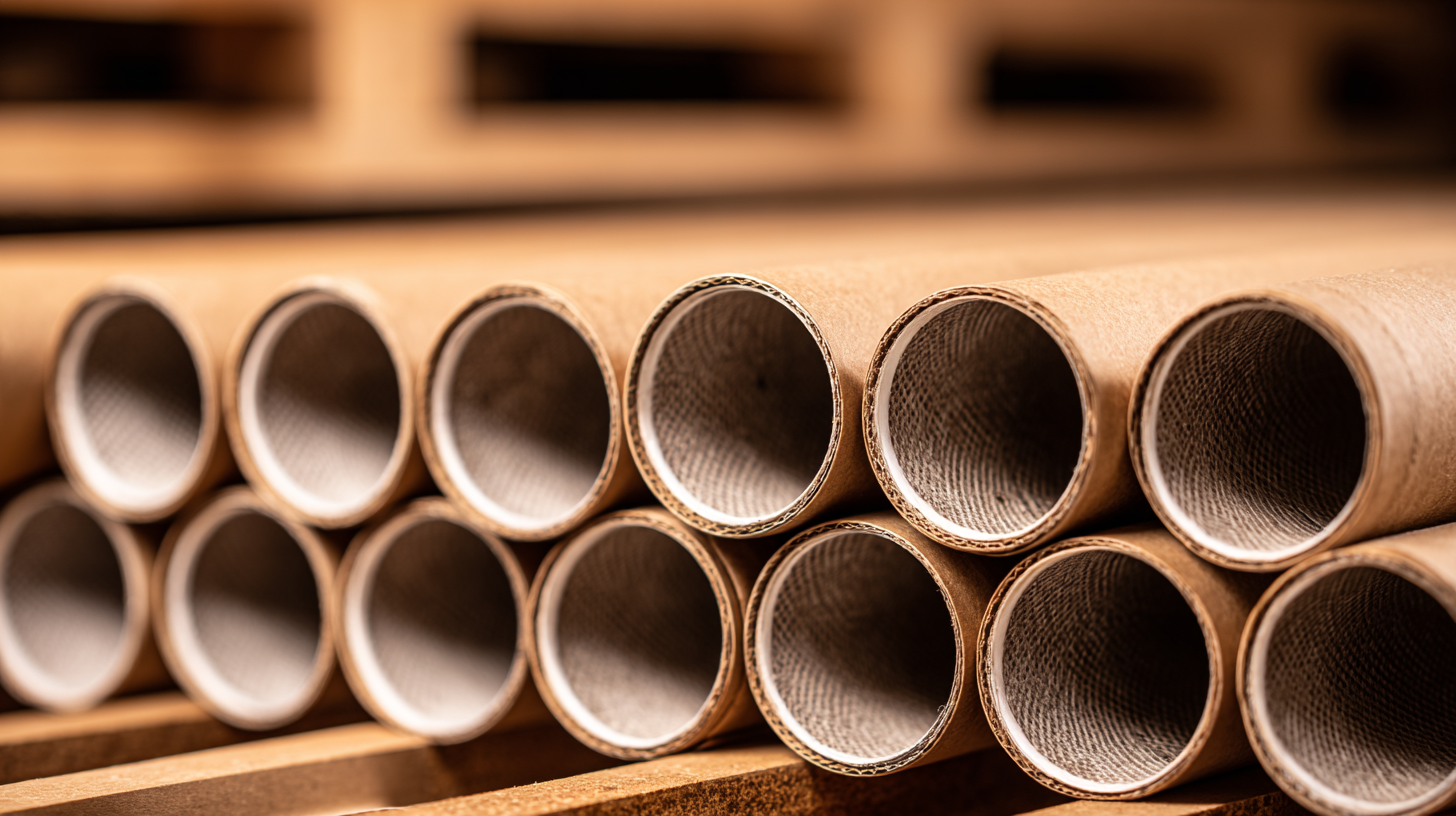Unlocking Efficiency: Why Cardboard Tubes for Shipping Are the Future of Sustainable Packing Solutions
As the demand for sustainable packing solutions continues to rise, many companies are turning to innovative materials that not only minimize environmental impact but also enhance efficiency in shipping operations. Cardboard tubes for shipping have emerged as a viable alternative to traditional packing methods, aligning with the growing emphasis on eco-friendly practices. According to a recent report by the Smithers Pira, the global market for sustainable packaging is projected to reach $650 billion by 2024, driven by increasing consumer preferences for green products. Cardboard tubes, which are recyclable and biodegradable, exemplify this shift, offering a lightweight yet sturdy solution that reduces material waste and shipping costs. Their ability to seamlessly protect cylindrical items makes them particularly suitable for various industries, from publishing to textiles, thereby positioning them as a frontrunner in the future of sustainable packing solutions.

Understanding the Environmental Impact of Traditional Shipping Materials
 The environmental impact of traditional shipping materials is increasingly significant, particularly as online shopping continues to grow. Conventional options such as plastic bubble wrap and Styrofoam are not only contributors to landfill waste but also contribute to carbon emissions throughout their lifecycle—from production to transportation. As consumers become more environmentally conscious, the demand for sustainable alternatives has surged, calling for a shift in packaging strategies across various industries.
The environmental impact of traditional shipping materials is increasingly significant, particularly as online shopping continues to grow. Conventional options such as plastic bubble wrap and Styrofoam are not only contributors to landfill waste but also contribute to carbon emissions throughout their lifecycle—from production to transportation. As consumers become more environmentally conscious, the demand for sustainable alternatives has surged, calling for a shift in packaging strategies across various industries.
In this context, cardboard tubes for shipping emerge as a promising solution. Unlike traditional materials, cardboard is largely recyclable and biodegradable, minimizing its ecological footprint. By adopting cardboard tubes, businesses can align their shipping practices with sustainability goals, reducing plastic waste and lowering carbon emissions. This innovative approach not only caters to consumer demand for eco-friendly solutions but also presents an opportunity for companies to enhance their corporate responsibility in an increasingly competitive marketplace. The transition to sustainable packaging options like cardboard tubes is not just about reducing harm; it's about leading the charge toward a more sustainable future.
Exploring the Benefits of Cardboard Tubes in Sustainable Packaging
The shift towards sustainable packaging has led to innovative solutions that minimize environmental impact, and cardboard tubes are at the forefront of this movement. These versatile containers are made from renewable materials, making them an eco-friendly alternative to traditional shipping boxes. Their lightweight nature reduces the overall shipping weight, which subsequently lowers carbon emissions during transport. Additionally, cardboard tubes are entirely recyclable and biodegradable, offering a responsible disposal option for consumers after use.
In addition to their environmental benefits, cardboard tubes provide practical advantages in packaging. Their cylindrical shape allows for efficient use of space in shipping, maximizing the number of products that can be transported at once. This not only reduces shipping costs but also streamlines the supply chain. Furthermore, cardboard tubes are exceptionally durable, protecting items from damage during transit, which is crucial for fragile products. With these benefits combined, cardboard tubes represent a promising future for businesses seeking sustainable and efficient packing solutions.
Unlocking Efficiency: The Rise of Cardboard Tubes in Sustainable Packaging
How to Choose the Right Size and Design for Cardboard Shipping Tubes
When choosing cardboard tubes for shipping, selecting the right size and design is crucial for maximizing efficiency and sustainability. According to a report by Smithers Pira, the global market for sustainable packaging is expected to reach $500 billion by 2028, highlighting a significant shift towards eco-friendly solutions. Cardboard tubes, due to their lightweight and recyclable nature, offer a great alternative to traditional packaging materials, making them an attractive option for businesses looking to reduce their carbon footprint.
To choose the appropriate size, it is essential to consider the dimensions and weight of the items being shipped. A well-fitted tube minimizes movement during transit, reducing the likelihood of damage and the need for additional packing materials. For example, tubes with an outer diameter of 3 inches and a length of 12 inches are often suitable for shipping posters or artwork, ensuring that items are secured without excessive empty space. Furthermore, designs such as perforated edges can facilitate easier opening and more user-friendly experiences for recipients, aligning with consumer demands for convenience and sustainability, as indicated in a study by the Packaging Association, which found that 75% of consumers prefer brands that use eco-friendly packaging solutions.
Innovative Uses of Cardboard Tubes Beyond Shipping
In today's fast-evolving landscape of sustainable packing solutions, the innovative uses of cardboard tubes extend well beyond their traditional role in shipping. With a growing emphasis on eco-friendly materials, cardboard tubes serve as versatile components in various packaging applications, from retail to industrial uses. According to a recent report by Smithers Pira, the demand for sustainable packaging is expected to reach $400 billion by 2027, driven by both consumer preferences and regulatory pressures for environmentally responsible practices. Cardboard tubes, made from recyclable materials, play a vital role in reducing waste in the supply chain.

Moreover, businesses are increasingly recognizing the potential of cardboard tubes in product design and marketing. Beyond their shipping capabilities, these tubes can be repurposed for promotional items, retail displays, and even machinery components. A study highlighted in the Journal of Cleaner Production notes that using cardboard tubes can decrease packaging materials by up to 30%, leading to cost savings and reduced carbon footprints for companies. As industries continue to innovate with these materials, exploring creative applications will position cardboard tubes at the forefront of sustainable solutions.
Tips for Implementing Cardboard Tubes in Your Shipping Operations
Implementing cardboard tubes in your shipping operations can significantly streamline your logistics while promoting sustainability. First, evaluate the dimensions and weight of the items you typically ship. Cardboard tubes are particularly effective for cylindrical or delicate products, such as posters, textiles, or fragile items. This approach not only reduces the need for additional padding but also optimizes space within shipping containers, leading to lower transportation costs and a smaller carbon footprint.
Next, invest in a reliable supplier who offers high-quality, recyclable cardboard tubes. Consider customizing these tubes to include branding or specific sizing that caters to your products. Training your staff on the benefits and best practices for using cardboard tubes can also increase efficiency; for example, ensuring that items are packed securely with minimal movement to prevent damage during transit. By adopting these strategies, your business can enhance its shipping processes while aligning with sustainable packing solutions.
Unlocking Efficiency: Why Cardboard Tubes for Shipping Are the Future of Sustainable Packing Solutions
| Dimension | Material Type | Weight Capacity (lbs) | Recyclability | Average Cost ($) |
|---|---|---|---|---|
| 3" x 36" | Kraft Paper | 15 | Yes | 0.75 |
| 4" x 24" | Recycled Paperboard | 10 | Yes | 0.50 |
| 6" x 48" | Heavy Duty Fiberboard | 20 | Yes | 1.20 |
| 8" x 36" | Sturdy Cardboard | 25 | Yes | 1.50 |
| 12" x 36" | Double-Wall Fiberboard | 30 | Yes | 2.00 |
Related Posts
-

Exploring the Rise of Sustainable Kraft Tubes: Why Brands Are Making the Switch in 2023
-

How to Create Unique Crafts Using Cardboard Tubes with Proven Techniques
-

Exploring Postal Tubes Industry Opportunities at the 138th Canton Fair 2025 in China
-

The Future of Delivery Packaging Innovations Shaping Sustainable Shipping Solutions
-

Maximizing Profitability in the Industrial Cardboard Sector at the 2025 China Import and Export Fair
-

Why Cardboard is the Ultimate Choice for Eco-Friendly Shipping Solutions
© 2025 Cardboard Tubes | Registered in England and Wales.
Company Number 2402078

